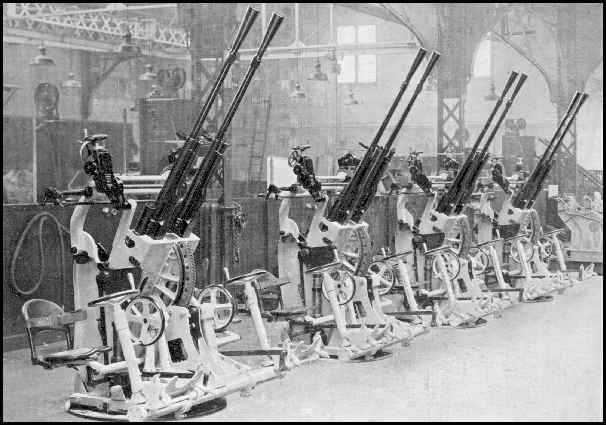Hotchkiss worked on automatic 25 mm designs during the 1930s but could not sell them to the French Army or Navy. They did succeed in the export market with some single and twin mountings being sold to Romania and possibly also to the Soviet Union prior to the war. In addition, the Japanese obtained a manufacturing license from Hotchkiss in 1935 and developed their own 13 mm and 25 mm automatic weapons based upon Hotchkiss technology. It is not clear if any of the Romanian guns were actually delivered and what guns had already been produced were taken over by the French at the start of the war. Following the Armistice, the Romanians did get at least some guns in 1943.
The French Army used the requisitioned and new production guns in their CAMle 1938 which was a single-gun, towed tripod ground mount that entered service in 1940. It was found to have some design shortcomings, which were addressed in the CAMle 1939 single-gun ground mount, also in use by the Army in 1940. The CAMle 1940J was a twin-gun towed tripod ground mount, a few examples of which were produced in 1940.
The French Navy belatedly placed orders with Hotchkiss at the start of the war for the air-cooled Mle 1939 but it is believed that few if any of these actually entered service prior to the Armistice. Following the French surrender, both the Mle 1939 and the improved Mle 1940 reached the fleet in limited numbers.
All Hotchkiss 25 mm guns were gas operated and used a 15-round magazine.
| Designation 1 | 25 mm/60 (1") Mle 1939 and Mle 1940 |
|---|---|
| Ship Class Used On | Destroyers |
| Date Of Design | 1938 |
| Date In Service | 1940 (?) |
| Gun Weight | 253.5 lbs. (115 kg) not including magazine |
| Gun Length oa | 90.4 in. (2.296 m) [one source says 96.5 in (2.420 m)] |
| Barrel Length | 59.1 in (1.500 m) |
| Rifling Length | 53.2 in. (1.350 m) |
| Grooves | (12) 0.0098 in deep x 0.141 in (0.25 mm x 3.58 mm) |
| Lands | 0.117 in (2.96 mm) |
| Twist | Uniform 1 in 25.2 |
| Chamber Volume | N/A |
| Rate Of Fire 2 | Cyclic
Mle 1938: 220 - 260 rounds per minute Mle 1939: 250 - 300 rounds per minute Mle 1940: 300 - 400 rounds per minute Effective: 110 - 120 rounds per minute |
- ^Data in this table is partially based upon the Japanese 25 mm/60 Type 96.
- ^Although later models had a higher cyclic rate of fire, the practical ROF was limited by the need to change out the 15-round magazines.
| Type 1a | Fixed |
|---|---|
| Weight of Complete Round | All types about 1.5 lbs. (0.68 kg) |
| Projectile Types and Weights | AP: 0.57 lbs. (0.26 kg) HE: 0.55 lbs. (0.24 kg) |
| Bursting Charge | AP: None HE: 0.02 lbs. (0.01 kg) |
| Projectile Length | AP: 4.0 in (10.2 cm) HE: 4.4 in (11.2 cm) Complete round: 10.4 in (26.5 mm) |
| Cartridge Case Type, Size and Empty Weight | Brass, 25 x 163 mm, N/A |
| Propellant Charge | N/A |
| Muzzle Velocity | AP: 2,870 fps (875 mps) HE: 2,953 fps (900 mps) |
| Working Pressure | 17.1 tons/in2 (2,700 kg/cm2) |
| Approximate Barrel Life | 12,000 rounds |
| Ammunition stowage per gun | 800 rounds 2a |
- ^Data in this table is partially based upon the Japanese 25 mm/60 Type 96.
- ^Destroyers had 800 rounds per gun of which 150 rounds (10 magazines) were kept in ready use lockers next to the guns.
| Elevation | Distance |
|---|---|
| 45 degrees - max | 8,200 yards (7,500 m) |
| Practical | 3,300 yards (3,000 m) |
| Ceiling | 16,400 feet (5,000 m) |
| Designation | Single: CAS Mle 1939 Twin: CAD Mle 1939 |
|---|---|
| Weight | 2.6 tons (2.7 mt) |
| Elevation | -5 / +90 degrees |
| Elevation Rate | Manual Elevation, only |
| Train | N/A |
| Train Rate | Manual Training, only |
| Gun recoil | N/A |
The Mle 1939 and 1940 mountings had a circular base with cutouts. These cutouts were used by cam followers and limited the elevation and train of the mounting to prevent firing into the ship. This was a fairly complicated assembly and the French later adopted the use of "safety rails" similar to those used by the British and American navies.
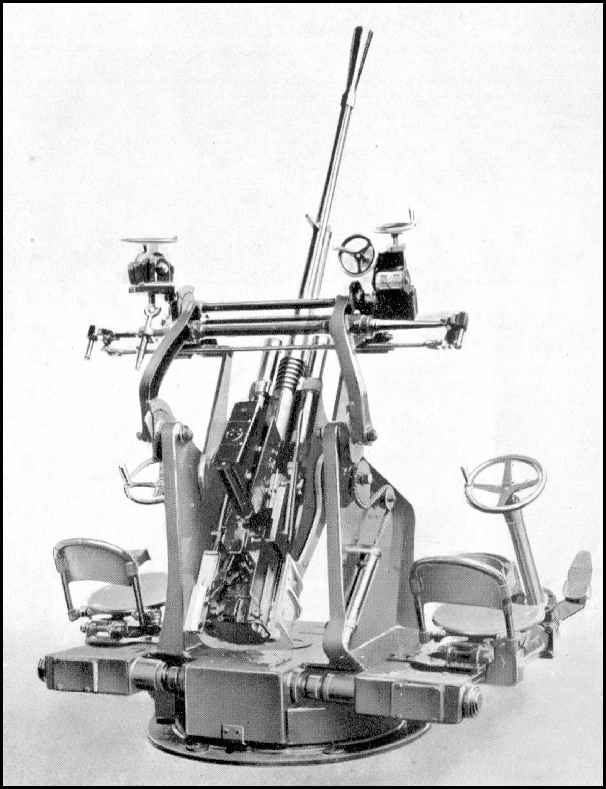
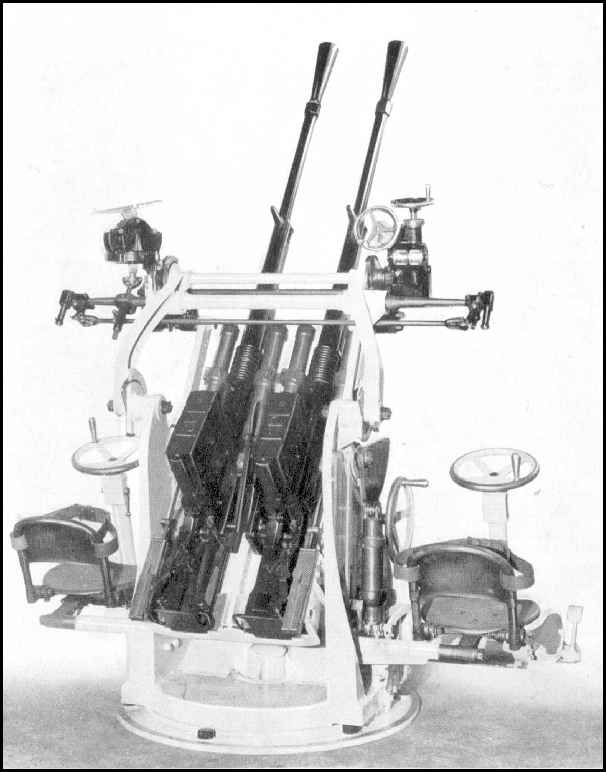
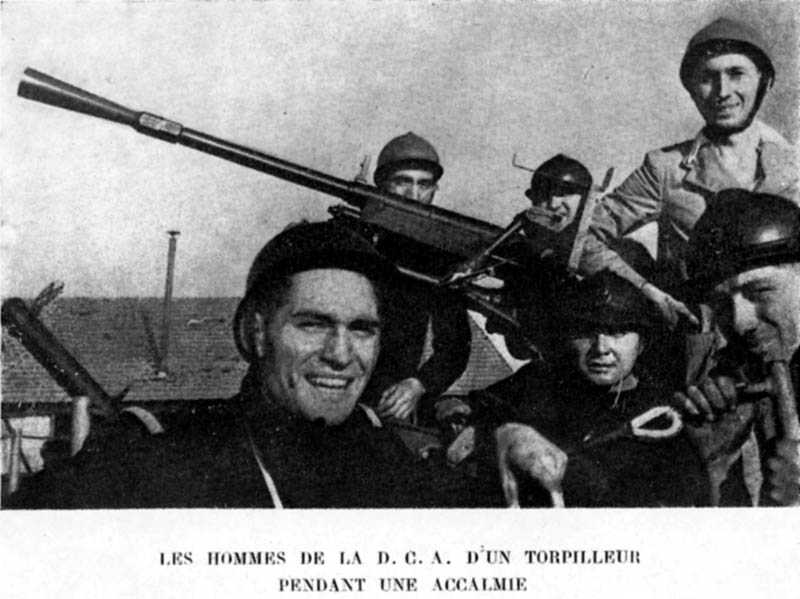
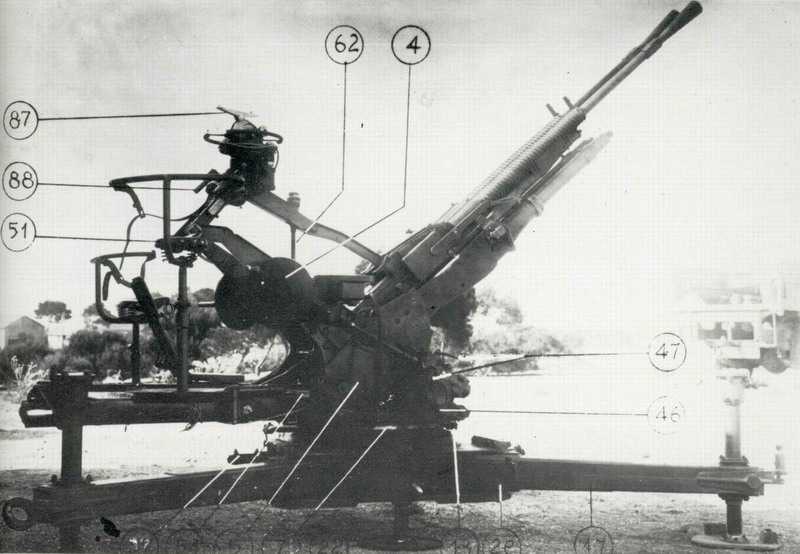
"Naval Weapons of World War Two" by John Campbell
"French Destroyers: Torpilleurs d'Escadre & Contre-Torpilleurs 1922 - 1956" by John Jordan and Jean Moulin
"Rapid Fire" by Anthony G. Williams
---
Special help from John Schaefer
07 March 2011 - New Datapage
27 September 2015 - Additional information on guns and mountings
18 November 2020 - Converted to HTML 5 format, reorganized notes, added catalog photographs

